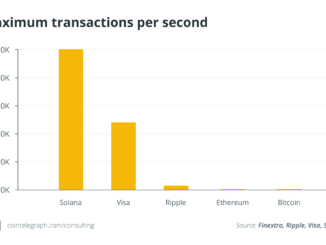

The latest development of the Metaverse was made possible due to technologies like artificial intelligence (AI), the Internet of Things (IoT), AR, VR, 3d modeling, and spatial and edge computing.
Artificial intelligence
AI paired with Metaverse technology ensures the Metaverse infrastructure’s stability while also delivering actionable information for the upper layers. NVIDIA technologies are a good example of how AI will be crucial in developing digital spaces where social interactions will occur in the Metaverse.
Internet of things
While IoT will allow the Metaverse to study and interact with the real world, it will also serve as a 3D user interface for IoT devices, allowing for a more personalized IoT experience. Both the Metaverse and the Internet of Things will assist organizations in making data-driven judgments with minimal mental effort.
Augmented and virtual reality
The idea of a Metaverse combines technologies like AI, AR and VR to let users enter the virtual world. For instance, virtual items can be embedded in the actual environment using augmented reality technology. Similarly, VR helps immerse you in a 3D virtual environment or 3D reconstruction using 3D computer modeling.
While wearing a virtual reality headset or other gear isn’t required in the Metaverse, experts believe VR will become an essential part of the virtual environment. However, it is essential to note that the Metaverse is different from AR and VR. If you are curious to know how you can enter the Metaverse, the answer is that augmented and virtual reality technologies are a way to get into the dynamic 3D digital world.
3D modeling
3D modeling is a computer graphics approach for creating a three-dimensional digital representation of any surface or object. The Metaverse’s 3D reality is crucial to ensuring the comfort of its consumers.
A lot of image collecting and graphic design are required to create a 3D world. The 3D graphics in most games like The Sandbox (SAND) provide the impression that the player is actually in the game. The Metaverse needs to be built on the same foundation.
Spatial and edge computing
The practice of leveraging physical space as a computer interface is known as spatial computing. With technologies like the HoloLens, Microsoft is a pioneer in the field of spatial computing in the metaverse space. In contrast, edge computing is a network-based cloud computing and service delivery paradigm. Edge provides end-users with computation, storage, data and application solutions like cloud computing services.
To deliver the same level of experience as in reality, keeping the user interested and immersed in the Metaverse is critical. In light of this, the response time to a user’s action should essentially be reduced to a level below what is detectable to humans. By hosting a series and combination of computing resources and communication infrastructures close to the users, edge computing provides quick response times.
Original Source: https://cointelegraph.com/explained/the-key-technologies-that-power-the-metaverse


















